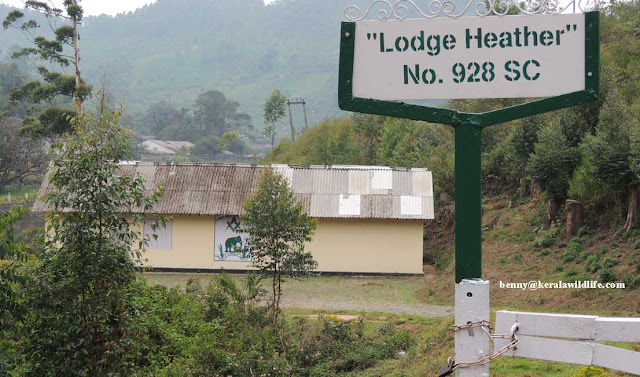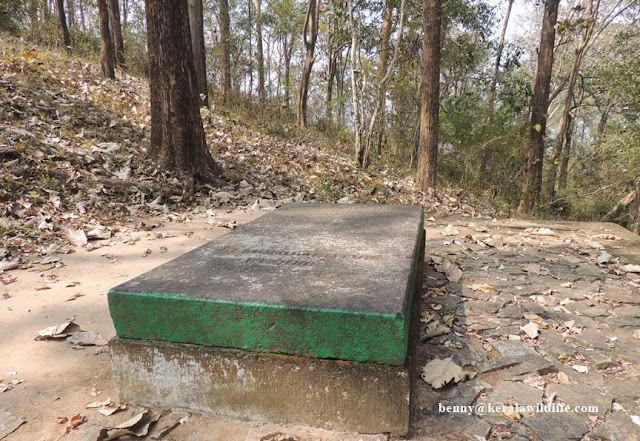Depictions of Banana in Rock Arts of Aanamalais
Naturalistic depictions of
two genera of wild Banana in rock art corpus of Anamalai valley shows that
ancient people of the valley were used the progenitors of cultivated banana at
least from Megalithic period. Ensete superbem and Musa acuminata (bermanica) are the two wild species
depicted in Attala and Chinnavendru rock art respectively. Both the caves are
located inside the political boundary of state of Kerala, Southern India. Musa acuminata is one of the progenitors of
domesticated bananas in the world. It supports
the theory of spontaneous evolution of domesticated banana in Western Ghats.
Naturalistic
depictions in rock arts indicate close relationship of ancient man with their
environment, especially plant and animals. It helps us to draw ecological
history of the area. The rock art corpus of Anamalai Valley East encompass and
area of about 150sq km of forest in South Western Ghats Landscape. This
geographical region falls in the political boundary of Kerala and Tamil Nadu. First rock art of the area was reported by Dr.
Padmanabhan Thampi in 1976. Continuous exploration of the area till 2013
yielded 23 rock arts of different colours and environment. As per expert opinions
the period of these petrographs are from late Mesolithic to early Historic. The
authors of the depictions are hunter gatherers and early farmers (4000 B.P to
1000 B.P). Red ochre paintings (and its shades) are considered older than white
painting. (Thampi S.P 1983, Mathpal Yeshodhar 1998)





Two sites in
this rock art corpus, Aattala and Chinnavendru, bear depictions of two genera
of banana species. From its anatomy and features the depictions could be
Ensette Superbum and Musa (accuminata). These are the two genera found in the
forest tracts of this region.
Wild banana (Musa acuminata growing in Munnar forest range)
Ensette
Superbum with fruits ,inflorescence , and its seed’s cross section is depicted
(in Kaolin) in Aattala cave (180
15’N
latitude and 770 15’E, at 1500 MSL) located in the northern end of
the rock art corpus. The depiction clearly described features of wild banana of
Ensete genera. (Yeshodhar Mathpal deciphers this as flower pot, Mathpal Yeshodar
1988. Rock Art in Kerala). A pertograph in Chinnavendru cave, discovered in 2009,
bears a motif of Musa acuminata with inflorescence in harvest.
(Ensete superbum growing in grassland near Aattala cave)
The banana family has two genera, ie, Ensete and Musa.
The Ensete species are distributed in Asia and Africa. It is a relic genus and
few species are good for domestication. Musa acuminata is considered as the
progenitor of domesticated banana. The fruits of the wild musa contain seeds,
but traits- sweet pulp, better fiber etc. The leaf is also useful for serving
and wrapping food. The inner pseudo stem, flower etc are edible.
Ensete superbum with an inflorescence
(banana stalk) is depicted in white kaolin in Aattala cave. The environment of the
cave is high altitude grassland interspersed with mountain forest (Shola) and a
typical habitat for Ensete. One can easily notice the presence of Ensete groves
around the cave. Since the fruit carry big seeds, it is not edible like
domesticated banana. But the seeds are widely used in Indigenous medicine among
different tribes.
The
Chinnavendru cave located at an altitude of 700MSL in the leeward of Anamalais,
carry a single motif of Musa species. The scene describes a man harvesting
banana stalk. The leaf structure, pseudo stem, sucker etc are beautifully
depicted.
Identifying Ensete and Musa from the depictions
The two genus of banana
depicted in Attala and Chinnavendru are Ensete and Musa respectively. The
plants can be identifiable from its anatomy and physical features.
Ensete Superbum.
Ensete Superbum, locally known as ‘Kallu Vazha’ in
Malayalam and ‘Kalvazhai’ in Tamil has wide distribution in Western Ghats. It
is known as ‘Bahuja’ in Sanskrit.
Botany of the plant-
This Plant may
grow up to 12 ft tall and the psuedostem may be up to half the height with a swollen base. The feature of its
psuedostem and swollen base including the rhizome is a significant feature for
identification of Ensete. These features are clearly depicted in the painting.
Likewise bananas growing in high altitude have to withstand regular wind. So
the lamina (leaf blades) of the plant is usually found torn in high altitude.
This local feature of Ensete is also depicted very clearly in Attala rock art.
From physical description and the presence of Ensete grows in the cave area
gives strong reasons to decipher this picture as Ensete. Since Ensete Superbum
is the common species found in Western Ghats, the painting is identified as
Ensete Superbum. 

Musa accuminata is depicted in Chinnavendru Cave. This cave is
located about 20km North-West of Attala. Musa acuminata barmanica is the wild species
found in Western Ghats. It is naturally growing in rainforest and evergreen
forest between 500 to 1500MSL. It is called ‘Kattu vazha’ in Malayalam and
Tamil.


Botany: The rhizome of musa is
an underground stem with numerous growing points of suckers. The inflorescence
grows vertically or obliquely. The banana is propagated sexually by seeds
and asexually by suckers. A sucker is a shoot grows from a bud at the base of
the plant.
The above said features of musa acuminata are depicted carefully
in Chinnavendru cave. The author clearly depicts the pseudostem, suckers and
inflorescence in oblique. Musa acuminata burmanica is the species found in
south Western Ghats. So there are no suspicions in assigning other species of
musa for identification. But there exist a serious question- is the depicted
species is wild or domesticated? Since both wild and domesticated musa has same
physical features, we cannot definitely specify the species from the drawing.
The Period
The paintings
of Attala and Chinnavendru have no inter-site relationship. Paintings in
Aattala are in kaolin, whereas paintings in cChinnavendru are in ochre. In
Attala the authors used rough brush or finger tip to depict the pictures, where
as fine brush was used in Chinnavendru. So it is definite that Attala and
Chinnavendru paintings are from different period.
The Attala
cave is studied by many scholars such as Dr.Thampi, Yesodar Madpal, Erwin
Neumayer, Dr. Ajith etc. Dr. Thampi opined that the naturalistic paintings of
Attala go back to Mesolithic and date back to 7000 BCE. Yeshodhar Mathpal opined that the depiction of
‘Flower pot’ (Ensete) is from Medieval period (1000 B.P). Dr. Ajith Kumar, in
his recent studies mentioned that these paintings are from early historic
period. As per regional studies the Attala cave is associated with Muthuva
Tribes who were migrated from Madurai. Period of their migration is still in
controversy.
The
Chinnavendru cave is reported in 2010 (Kurian Benny, Danushkodi, Iswar etc). No
scientific studies conducted in this cave. Since the painting depicted a man
with a knife near the banana we can conclude that this painting is from Iron
Age. Yeshodhar Mathpal opined that the naturalistic depiction in red paintings
of the area are from late Mesolithic to Megalithic period 4000 B.P to 2500 B.P.
Dr. Ajith has the opinion that the possibility between 900 to 300 BCE. The
present author also has the opinion that this painting is from Iron Age.
Ecology of the area
Ecology and
geographic features of the location of
Chinnavendru cave has certain noted features. It is located in the last lap of
depression formed in the north eastern side of Anamudi peak, the highest peak
in Western Ghats. Sudden fall of altitude from 2694MSL to 500 MSL causes micro
climatic regions within short span of distance. These climatic and geographic
features of the region may help in mutation of Musa through generation. This is
only an assumption and required more scientific studies. The higher reaches of
the area is the natural habitat of wild musa. Erosions or other natural agents
may carry the suckers downhill which resulted in its grown in a different
environment. This may resulted in mutation which causes development of variety
rich in flesh than seeds through ‘parthenocarpy’. This process involves development of fruits without
prior fertilization either naturally or artificially. It enables the plant to
fill more pulp in the fruit without pollination.
Cultural backdrop
Banana is mentioned in many of our
epics. The method of growing bananas and mention of dwarf
stature bananas etc have been quoted in Sangam literature, Kautilya’s
Arthasastra (300-400 B.C.) and its presence in paintings and sculptures of
Ajantha and Ellora (600 B.C.) caves etc.
Ethno-botanical knowledge of wild musa.
The tribes of Anamalais, especially those who living in uphill has fair
knowledge about wild bananas. The Muthuva,
Kadar, Malasa, Malamalasar and Vel Velar (Anjunad Vellalas) tribes in Anamalais
using wild banana. Malayan tribes of the west slope are also considered wild
banana as medicinal. The Muthuvas and Kadars of Parambikulam Tiger Reserve are
growing a domesticated wild species from wild banana. The seeds of wild banana
species have good demand in Ayurvedic herbal market. This is one of the forest
produce collected by the tribes. The seeds of Ensette and Musa are used against
kidney stone in tribal medicine.
Studies on ‘Channa vazha’, a wild species of musa acuminata growing in
South Western Ghats revealed that Channa Vazha has close similarity with
domesticated species of the area. The ‘Karivazha’ found in high altitude
villages of Anjunad and Munnar is believed to be developed from the musa
acuminata growing wild in the watercourse of the area.
Need for Ethnobotanical study
From depictions and drawing of banana in the rock art alone can prove
the exact species. Because the changes caused by domestication are not evident
in the plant’s physical features. Right
now we have only assumptions, drawn from anatomy and ecological history for
claiming the domestication of musa in this region. But for more accurate results we have to use
Archaeobotony. ‘It helps us to interpret the interaction of plants and ancient
human population. If the spades of archaeologists yield ancient pollens from
debris, Phytolith analysis (of pollens) will help to find out the domestication
period in this region.
Conclusion
Though it is
claimed that first domestication of banana was happened in Papua New Guinea (8000 BCE), recent
researches show that spontaneous evolution of domesticated banana was happened
in Eastern Himalayas, Eastern Ghats and Western Ghats along with other regions
of South East Asia. The natural evolutions of domesticated musa occurred due to
mutation and allow the fruits to fill more pulp without pollination. Elavazhai
of South India and Bhimkol of Assam are two examples of early domesticated
species. Biogeographic studies on
isolated occurrence of many species of plants, fish and animals of Malayan
origin in remote pockets of Western Ghats lead to many speculation on geological
history of South India. Wild banana is one of this species distributed in
Malayan bio-geographic zone. Certain Musa species which is the progenitor of
domesticated banana is occurred in the Western Ghats. The ethno botanical
knowledge of the species and development of certain local varieties of bananas
lead to a speculation that the region witnessed early domestication of banana.
Similarly distribution of suckers in a different climatic region through
natural agent may causes parthenocarpy of the fruits, and ultimately edible
species may develop. Two rock arts in Anamalai Valley East rock arts corpus
carry depictions of two genera of Wild banana- Ensete superbum and Musa acuminata.
It indicates that the ancient people of Western Ghats had knowledge of wild
banana and its domestication at least from Neolithic period.








Do you want to donate your kidnney for money? We offer $500,000.00 USD (3 Crore India Rupees) for one kidnney,Contact us now urgently for your kidnney donation,All donors are to reply via Email only: hospitalcarecenter@gmail.com or Email: kokilabendhirubhaihospital@gmail.com
ReplyDeleteWhatsApp +91 7795833215
ReplyDeletesell your k i d n e y for money, we are looking for k i d n e y d0n0rs with the sum of $500,000.00 USD,apply now via email: (sk500968@gmail.com)
WhatsApp +91 7795833215